WASHINGTON -- The U.S. Chamber of Commerce reported an investment of $4 million to help 10 Republican congressional candidates in California and Illinois.
The advertisements all begin with a 10-second clip of Darlene Miller, the winner of the Chamber's Small Business of the Year in 2008, explaining that uncertainty over taxes and health care is preventing her from hiring more workers. Then they shift to nearly identical attacks on their intended Democratic targets, criticizing higher taxes, cuts to Medicare, health care reform and high energy costs.
The Chamber ad blitz heralds the beginning of the coming crush of third-party advertising directed at House races. Super PACs, unions, trade associations and non-profits already have spent $39 million since June on general election campaign efforts, ahead of their pace in the previous election. Over the next 30 days, these groups will spend between double and triple that amount just in House races.
This is where the big money flooding the 2012 election due to the Supreme Court's Citizens United decision will make its biggest splash. As commentators lament the seeming lack of impact big money has had on the presidential race, down-ballot races where candidates rarely see $10 million in contributions will be the ones feeling the full impact of the new campaign finance world.
"The scale of House races, and even Senate races, compared to the presidency is much smaller," said UC-Irvine election law professor Rick Hasen. "So, dropping six- or seven- figure spending into a race can really shake it up."
In 2010, a lot of races were shaken up by outside spending. Dr. Ami Bera, a Democratic candidate in a California House race, was hit with a late October $682,000 ad buy from the Karl Rove-founded super PAC American Crossroads. The Crossroads ad-buy amounted to nearly a quarter of all the money Bera had raised for his campaign. Bera's campaign, then gaining in the polls, went into reverse and he lost.
"[I]t's like playing a chess game," Bera explained in a segment about super PACs on the radio show This American Life. "You lay out your strategy and you're making your moves and so forth. You've taken your opponent's queen, and all of a sudden he reaches into his pocket and pulls out another queen and drops it on the table."
Bera is running again this year in a hotly contested rematch with his 2010 opponent incumbent, Rep. Dan Lungren (R). The race already has attracted millions in spending by outside groups. His campaign has decided that, while it can hold on to rainy day funds to respond to a super PAC blast, they have also worked to introduce Bera early to voters in a positive campaign ad and to make as many person-to-person connections with voters as possible.
"The biggest way we're combating outside money is with our grassroots field program," said Bera's communications director Allison Teixeira. "We know that communicating with people face-to-face has more of an impact than communicating with them any other way. We have the largest field program of any congressional campaign in the country, and our volunteers are knocking on voters' doors every single day to tell them the truth about Dr. Bera and why they're supporting him."
Bera is also benefiting from another factor that could shake up the outside group spending picture in the 2012 election. So far, it is his opponent, Lungren, who has seen more third-party spending with more than $2 million spent against him by Democratic-allied super PACs, unions and environmental groups.
In 2010, from June through September, conservative groups spent $25.6 million attacking Democratic candidates while progressive groups only spent $4.6 million on attacks on Republicans. Conservatives spent another $4.7 million to promote their candidates and progressives only spent $2.2 million for advertisements in support of theirs.
That disparity no longer exists, at least for now. Progressive groups already have topped $16.7 million in spending against Republicans with conservatives close behind with $15.3 million spent. Conservatives lead on supportive spending for their candidates with $4.3 million to progressives $1.78 million in pro-candidate spending.
Leading the change in favor for progressive groups is the super PAC House Majority PAC, created in the wake of the Republican House landslide win in 2010. The group has already spent more than $10 million and has a planned budget in excess of $30 million.
"The whole reason that House Majority PAC was formed is to combat what happened in so many districts last cycle when we saw Democrats who were running competitive races -- keeping it close -- and were just overwhelmed by outside GOP spending at the last minute," says House Majority PAC spokesman Andy Stone.
House Majority PAC is not only the leading spender among independent groups on House races, but it's also working to help coordinate efforts among progressive groups.
"One of the roles that House Majority PAC sees for itself is helping coordinate among different progressive groups that have been traditionally involved in electoral politics," Stone explained, listing unions like the Services Employees International Union, environmental groups like League of Conservation Voters and women's groups like Emily's List as among those involved in coordinated efforts.
While progressive groups are currently holding their own in the outside spending fight in House races, that dynamic could shift quickly, especially if conservative donors and groups decide to cut and run from the presidential race and spend big down-ballot.
Spending by conservative groups is likely to tick up by a large margin this month. The twin Crossroads previously announced a $32 million budget for the House with very little of that spent so far. Groups linked to the billionaire Koch brothers like Americans for Prosperity, American Future Fund and Americans for Job Security have spent tens of millions on House races in the past and will likely spend similar sums this month.
One group, the Congressional Leadership Fund, a super PAC allied with the conservative non-profit American Action Network, is ready to spend big in the closing weeks of the campaign.
""The majority of our resources will be spent in the final weeks before the election," says Dan Conston, a spokesman for the Congressional Leadership Fund.
The conservative super PAC has spent only $1 million so far and plans to spend millions more by the end of the month.
Conston believes that voters will be ready for their anti-administration message when the election comes. "Republicans are energized. Fundamentally, people believe the country is on the wrong track and are looking for a check and balance to the incumbent president on the ticket."
House Majority PAC's Stone hopes that the coordination of progressive groups and the birth of groups like his can not only help to steady the ship when the conservative groups unleash their spending in October, but, maybe, go a little further.
"We saw this dynamic in House races last cycle in which Democrats were running competitive races and were just blown out of the water," Stone says, mentioning what happened to Bera at the hands of the Crossroads group. "Making sure that that doesn't happen again. That's definitely a goal of ours. And moving towards a Democratic majority."
